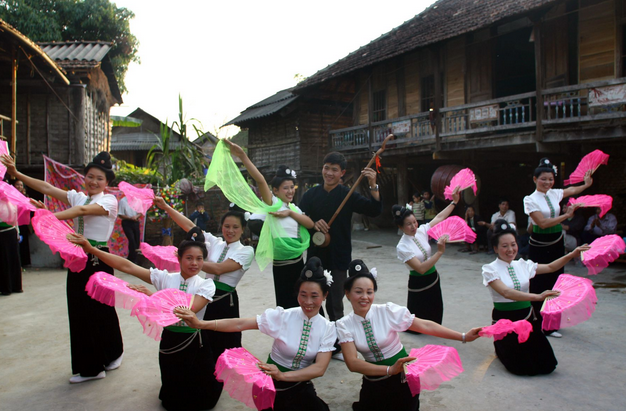(VOVWORLD) - Tay ethnic minority women in Ta Chai commune, Lao Cai province, are using their culture to improve their lives by promoting local tourism.
 A Xoe dance performance in Ta Chai. (Photo: dulichsapa365.vn) A Xoe dance performance in Ta Chai. (Photo: dulichsapa365.vn) |
Ta Chai commune has 9 hamlets populated by Tay ethnic people. Visitors follow winding roads through the hamlets, admire the little stilt houses silhouetted against the enormous mountains, participate in local activities, and watch performances of Xoe dancing.
The stilt house of Tran Thi Van and her husband in Na Lo hamlet has been offering a community tourism service for a year. Their “Van Khuya homestay” service attracts lots of tourists, particularly on the weekends. Their model of providing accommodations and meals that include local specialties has helped Van dramatically increase the family’s income.
“Thanks to the support of other women in the district, I was sent to study tourism models in neighboring provinces and saw how profitable the models could be. I decided to open a home-stay service,” Van recalls how she got the opportunity.
Few people know that Xoe dancing in Ta Chai was influenced by the French waltz. At one time, Xoe dancing was performed for the family of Hoang A Tuong, who ruled the region in the early 20th century. During the period when Hoang A Tuong’s palace was being built from 1914 to 1921, the French architects hired for the project combined the waltz rhythm with Xoe dancing to make the unique Tay Xoe, which is different from the Xoe dance of the Muong or the Thai ethnic group.
Whenever a festival such as the "going to the field" festival, the forest worshiping festival, or the new rice festival takes place, Tay people in Ta Chai dance their version of Xoe. Spring visitors can attend the Xoe dancing festival which usually occurs on the 5th day of the first lunar month to pray for good crops and abundant grain all year round.
The simple ritual involves a tray of offerings placed at the foot of a neu tree to pay homage by the villagers to the god of farming. After a shaman completes the ritual, all the villagers, regardless of age or gender, join hands to dance Xoe to the boisterous sounds of gong, drum, and pí lè flute.
The model of combining tourism services with demonstrations of the customs and cultural traditions of local ethnic minority groups attracts many visitors, particularly foreign tourists.
Ta Chai currently has a dozen families providing homestay services and has established 6 Xoe dancing teams.
Vang Thi Yen, head of the Ta Chai Women’s Association, said: “Previously few local women took part in social activities. They were reserved and had an inferiority complex. Since Xoe dancing became linked with community tourism, local women have become more socialized and enjoy participating in community activities.”